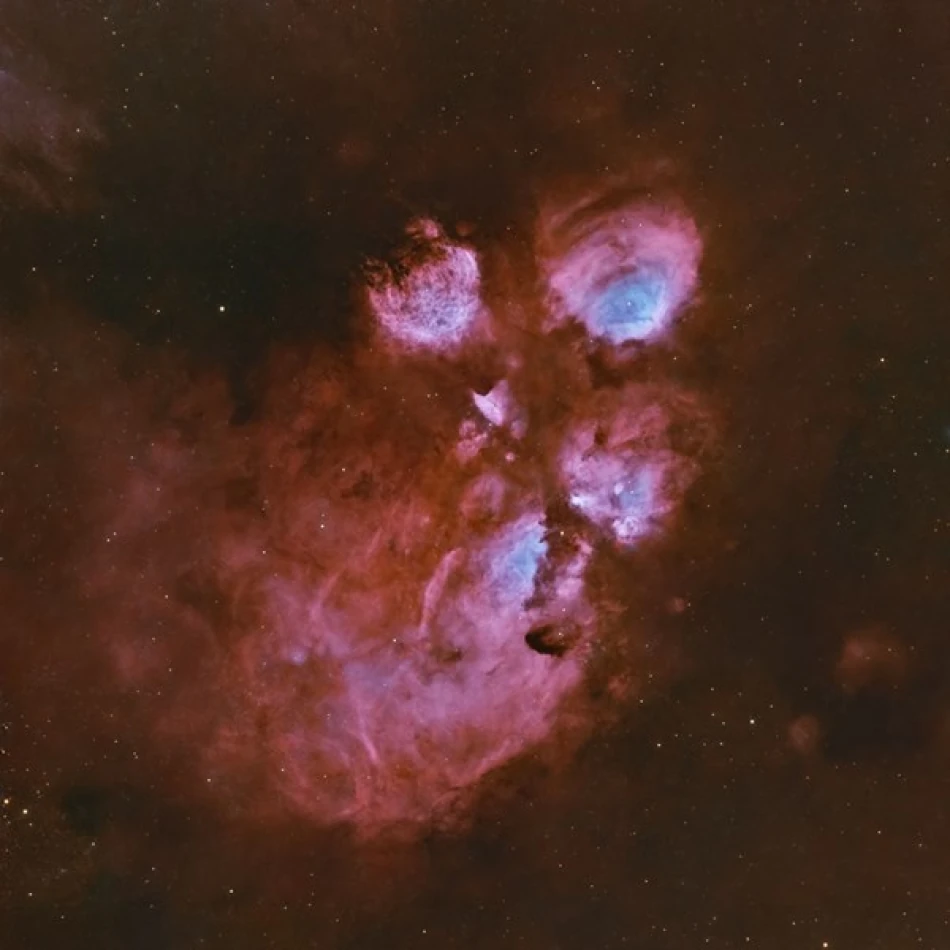
Mysterious 'Cat's Paw' Discovered in Abu Dhabi Desert, Sparking Intrigue
UAE Desert Observatory Captures Stunning Image of Star-Forming Nebula After 10-Hour Photography Marathon
The Al Khatam Astronomical Observatory in Abu Dhabi's desert has successfully photographed the Cat's Paw Nebula, a massive star-forming region located 4,370 light-years away in the Scorpius constellation. The achievement required a 10-hour imaging session and represents a significant technical accomplishment given the nebula's challenging low position in the UAE's sky.
A Cosmic Nursery Spanning Centuries of Light
The Cat's Paw Nebula, composed of cosmic gas and dust, ranks among the most prominent emission nebulae visible from Earth. This stellar nursery actively births new stars within a structure so vast that light takes 320 years to travel from one end to the other. Despite its enormous actual size, the nebula appears only slightly larger than a full moon when viewed from Earth.
The captured image reveals the nebula's distinctive dual-color composition: red regions indicate hydrogen gas, while blue areas show oxygen gas. These colors result from different elements glowing under intense radiation from nearby hot, young stars. The nebula earned its feline moniker due to its resemblance to a cat's paw print when viewed through telescopes.
Technical Achievement in Challenging Conditions
Overcoming Geographic Limitations
Photographing the Cat's Paw Nebula from Abu Dhabi presented unique astronomical challenges. The nebula never rises higher than 30 degrees above the horizon when viewed from the UAE's latitude, creating several technical obstacles that the observatory team had to overcome.
This low altitude increases atmospheric interference, as light from the nebula must travel through more of Earth's atmosphere before reaching the telescope. Additionally, the proximity to the horizon amplifies the effects of light pollution, making faint celestial objects more difficult to capture with clarity.
Desert Advantage
The observatory's location in Abu Dhabi's desert provides crucial advantages for deep-space photography. The arid environment offers exceptionally stable atmospheric conditions with minimal water vapor, reducing atmospheric distortion that can blur astronomical images. The remote desert location also minimizes urban light pollution, though the nebula's low position still presented significant challenges.
Broader Implications for Regional Astronomy
This successful capture demonstrates the UAE's growing capabilities in astronomical observation and astrophotography. The achievement comes as the Emirates continues investing heavily in space science, following the success of the Hope Mars mission and ongoing lunar exploration programs.
The 10-hour imaging session represents sophisticated planning and execution, likely involving multiple exposures combined through advanced processing techniques. Such extended observation periods are necessary for capturing the faint light emissions from distant nebulae, particularly when atmospheric conditions are less than ideal.
Understanding Stellar Formation
The Cat's Paw Nebula offers astronomers a window into stellar birth processes occurring thousands of years ago. The light captured by the Abu Dhabi observatory began its journey toward Earth around 2350 BCE, during the height of ancient Egyptian civilization.
Within this cosmic nursery, dense regions of gas and dust collapse under their own gravity, eventually igniting nuclear fusion to become new stars. The nebula's bright red and blue regions indicate active star formation, with young, hot stars illuminating surrounding material through intense ultraviolet radiation.
This successful observation adds to the growing body of astronomical research conducted from the Middle East, positioning the UAE as an emerging player in global space science and deep-sky observation.
 Layla Al Mansoori
Layla Al Mansoori







